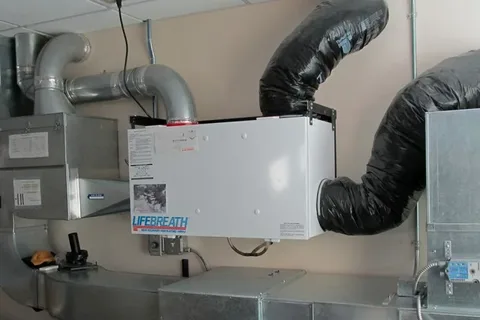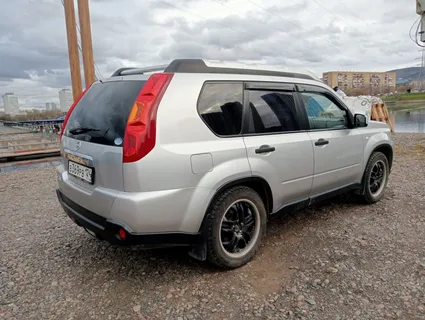Indoor air quality is just as important as temperature control when creating a comfortable home. Enter the HRV home ventilation system—a powerhouse designed to ensure you breathe clean, fresh air while efficiently managing energy consumption. But like any complex system, it requires regular maintenance to perform at its best. Whether you’re a seasoned homeowner or new to HRV systems, understanding how to keep your unit running smoothly can make all the difference for your family’s health and comfort.
How to Keep Your HRV System Running Efficiently Year-Round
Start with regular inspections to keep your HRV system operating efficiently throughout the year. Check for any visible dust or debris around the unit and ensure all vents are unobstructed. This simple practice can significantly improve airflow.
Next, monitor humidity levels in your home. An ideal range is between 30% and 50%. Excessive moisture can strain your HRV system, leading to inefficiencies and potential damage over time. Use a hygrometer to keep track of these levels.
Program your HRV system according to seasonal needs. During winter, focus on reducing ventilation rates when possible to conserve heat while ensuring constant fresh air circulation. In summer, increase airflow as necessary to combat humidity without sacrificing comfort.
A Guide to Cleaning Your HRV Home Ventilation
Cleaning your HRV Home Ventilation is crucial for optimal performance. To ensure safety, turn off the unit and disconnect the power. Then, carefully remove the access panel from the HRV unit.
Next, remove the filters and inspect them for dirt or damage. If they’re reusable, wash them with warm, soapy water; otherwise, replace them according to manufacturer recommendations. Wipe down any dust or debris inside the unit using a damp cloth.
Check ducts for blockages and clean vents throughout your home. Use a vacuum attachment to remove accumulated dust from both ends of each ductwork section. Once everything is clean, reassemble your HRV system and restore power before testing it to ensure proper airflow.
Understanding the Components of Your HRV System: Maintenance Made Easy
Your Home Ventilation System comprises several vital components that work together to ensure optimal indoor air quality. Understanding these parts can simplify maintenance and help you identify any potential issues. The main elements include heat exchangers, fans, filters, and ductwork.
Heat exchangers transfer the energy of stale air to fresh incoming air without mixing them. This process helps maintain comfortable temperatures in your home while conserving energy. Regular inspection of this component is essential for efficiency.
The fans circulate outgoing and incoming air, so keeping them clean is vital for proper airflow. Filters trap dust and allergens; replacing or cleaning them regularly ensures your system operates smoothly. Familiarising yourself with these components makes it easier to spot signs of wear or the need for maintenance.
Signs Your HRV System Needs Maintenance: What to Look For
If your Home Ventilation System is not performing well, it may be time for maintenance. One clear sign is a noticeable decrease in airflow. Check your system if rooms feel stuffy or if you’re not getting the fresh air you expect.
Another indicator of potential issues is unusual noises coming from the unit. Rattling or grinding can signal that components are worn out and require attention. Please don’t ignore these alerts; they often mean something needs fixing.
Foul odours circulating through your home could also indicate trouble within the system. Mould growth or accumulated dust in ducts might be the culprit, affecting air quality and overall performance. Stay vigilant for these warning signs to keep your HRV system running smoothly.
Maximising Energy Efficiency: Maintaining Your HRV Ventilation System
Maximising energy efficiency in your Home Ventilation System is crucial for comfort and savings. Regular maintenance ensures your system operates at peak performance, reducing unnecessary energy consumption. Keeping the unit clean allows for better airflow and minimises strain on the motor.
Consider monitoring your filters closely. Clogged or dirty filters can significantly hinder efficiency, leading to higher energy bills. Replace them as needed to ensure optimal air quality and circulation throughout your home.
Inspect ductwork for leaks or obstructions regularly. Well-sealed ducts maximise airflow and prevent costly heat loss during winter months. By maintaining these elements of your HRV system, you’ll enjoy a comfortable indoor environment while minimising environmental impact and costs associated with heating and cooling.
How Often Should You Service Your HRV System? A Comprehensive Guide
Regular servicing of your Home Ventilation System is essential for optimal performance. Generally, it’s recommended to schedule a professional service at least once a year. This annual check-up helps ensure that all components are functioning correctly and efficiently.
In addition to yearly maintenance, you should inspect the filters every three months. Depending on usage and environmental factors, some homes require more frequent changes, especially in heavily populated or dusty areas. Clean filters enhance airflow and indoor air quality.
If you notice unusual noises or decreased airflow between services, don’t hesitate to get an inspection sooner than planned. Prompt attention can prevent minor issues from becoming costly repairs later on. Keeping track of these intervals will help maintain the longevity of your HRV system.
DIY Maintenance Tips for Your Home HRV System
Maintaining your Home HRV System doesn’t always require a professional.
Regular Filter Inspection and Replacement
Discuss the importance of periodically checking and replacing HRV system filters to maintain optimal airflow and air quality, including tips on identifying when filters need changing.
Cleaning the HRV Unit and Ducts
Highlight the steps for safely cleaning the HRV unit and ducts to remove dust, debris, and mould, which can impede performance and affect indoor air quality.
Checking Ventilation Fans and Dampers
Explore how to inspect the ventilation fans and dampers for proper operation, ensuring they open and close correctly and function efficiently to maintain balanced airflow.
Monitoring Humidity Levels
Emphasise the importance of monitoring indoor humidity levels and adjusting the HRV system settings to prevent excessive moisture buildup and maintain a comfortable living environment.
Scheduling Professional Inspections
Explain the benefits of scheduling regular professional inspections and maintenance for your HRV system, including what to expect during these services and how they can enhance system longevity and performance.
The Importance of Regular Filter Replacement in Your HRV System
Regular filter replacement is crucial for the efficiency of your Home Ventilation System. Filters trap dust, allergens, and other particles to ensure clean air circulates throughout your home. When filters become clogged, airflow is restricted, making it harder for the system to function effectively.
Ignoring this maintenance step can increase energy costs as your HRV works overtime. Moreover, stagnant air may compromise indoor air quality, resulting in health issues for those with respiratory conditions or allergies.
To maintain optimal performance, check filters monthly and replace them at least every three months. You should change them more frequently during peak usage seasons like winter and summer. Keeping up with filter replacements helps extend the life of your HRV system while providing fresher air for your living space.
Common HRV System Issues and How to Address Them
HRV systems can face several common issues that affect their performance. One frequent problem is inadequate airflow, which may stem from clogged filters or blocked ducts. Regular inspections and cleaning can help maintain optimal air circulation throughout your home.
Another issue involves unusual system noises, such as rattling or grinding sounds. These noises could indicate loose components or debris in the fan motor. Addressing these concerns early on can prevent further damage and ensure a quieter operation.
Humidity control is essential for indoor comfort. If you notice excessive moisture buildup, check your HRV’s settings or consult a professional for adjustments. Keeping an eye on these potential problems will help keep your Home Ventilation System running smoothly.
Protecting Your Indoor Air Quality: Maintaining Your Best HRV System
Indoor air quality significantly impacts your health and comfort. A well-maintained Best HRV System creates a fresh, clean environment. Regular maintenance ensures the system effectively exchanges stale indoor air with fresh outdoor air while filtering pollutants.
If neglected, dust, allergens, and contaminants can accumulate within the HRV system. This buildup not only reduces efficiency but also leads to poor air quality. Cleaning components like filters and ducts regularly helps prevent these issues and keeps your home’s atmosphere healthy.
Professional vs. DIY Maintenance: What’s Best for Your HRV System?
When it comes to maintaining your Home Ventilation System, choosing professional help and DIY maintenance can take time and effort. Professional technicians bring expertise and specialised tools that ensure a thorough inspection and cleaning of your system. They can identify issues you overlook, making their service invaluable for complex problems.
On the other hand, DIY maintenance is cost-effective and empowers homeowners. Simple tasks like changing filters or cleaning vents are manageable for most people. You can keep your HRV in good shape without breaking the bank with proper guidance.
Consider your comfort level with mechanical systems and time constraints. For those who enjoy hands-on projects, a mix of both approaches could work best—tackling minor tasks yourself while calling in professionals for more complicated needs.
Seasonal Maintenance Checklist for Your Vented Heating System
As the seasons change, so do the demands on your Vented Heating System. Begin by checking and replacing filters, typically every three to six months. Clean filters help maintain optimal airflow and enhance indoor air quality.
Next, inspect the ductwork for any signs of dust buildup or blockages. A thorough cleaning can prevent inefficiencies and ensure air flows freely throughout your home. Don’t forget to look at exhaust vents; they should be clear of obstructions.
Examine the heat exchanger for any moisture accumulation or mould growth. Proper maintenance here is crucial for preventing unpleasant odours and maintaining healthy air circulation in your living space. This checklist will help you prioritise necessary tasks throughout the year.
Conclusion
Maintaining your HRV home ventilation system is essential for optimal performance and indoor air quality. Regular upkeep extends the life of your equipment and enhances energy efficiency, saving you money in the long run. Following a structured maintenance routine, including cleaning and replacing filters, will consistently ensure fresh air flows throughout your living space. Pay attention to any signs indicating repairs are needed; addressing these early can prevent more significant issues.
FAQs
What is an HRV home ventilation system?
An HRV Home Ventilation System improves air quality by exchanging stale indoor air with fresh outdoor air while recovering heat from the outgoing air. This helps maintain energy efficiency without sacrificing comfort.
How often should I replace the filters in my HRV system?
It’s recommended to check your filters every three months and replace them at least twice a year. However, more frequent changes may be necessary if you have pets or live in a dusty area.
Can I perform maintenance on my HRV system myself?
Yes! Many maintenance tasks, such as cleaning filters and checking ducts, can be done independently. However, it’s wise to consult professionals for deeper inspections or repairs to ensure everything operates correctly.
| Related Business Listings |
| Contact Directory |
| Local Business Profiles |






